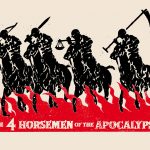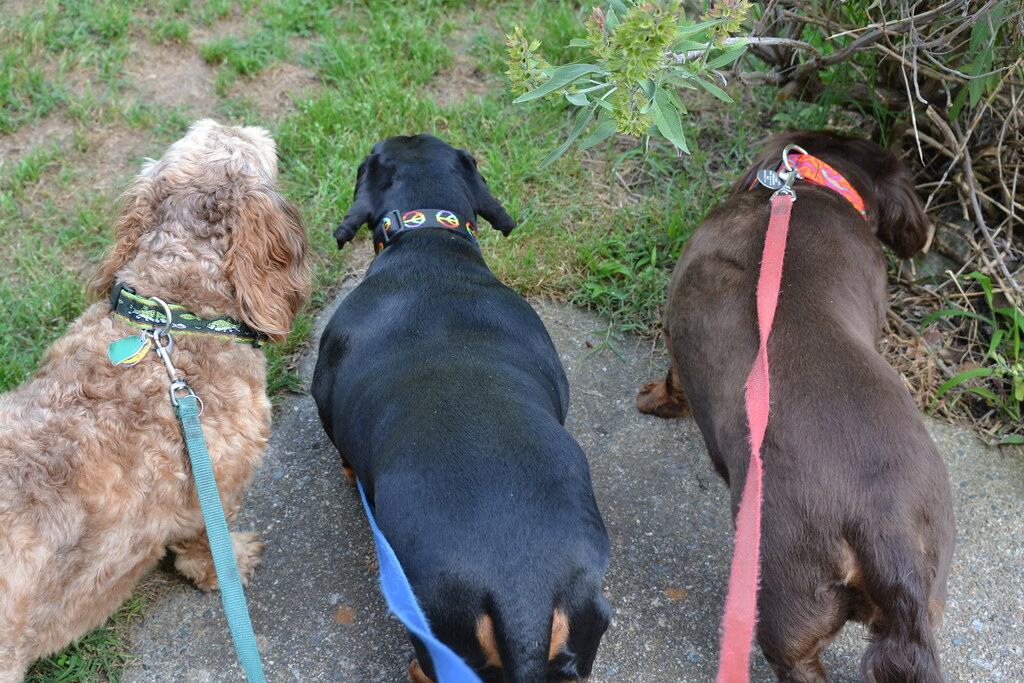On one of my visits to my chiropractor, he suggested I pick up the book The Well Adjusted Dog by Dr. Daniel Kamen. The book is written by a chiropractor who also does adjustments on animals, although he doesn’t advertise this. Apparently, chiropractors are not allowed to practice on animals in many states, which I didn’t realize, since I live in Canada and this doesn’t seem to be a problem here in my province. However, what is good to know is that veterinarians in the U.S. are allowed to do adjustments on animals… that is if you can find one that’s studied chiropractic medicine. Not an easy task.
In any case, Dr. Kamen wrote this book (among others) so that dog owners could learn to do their own adjustments on their dogs. The book is very informative and walks you through the anatomy of a dog’s spine, teaches you how to feel for misalignments, and provides a variety of techniques that you can do at home. Many of the techniques focus on how to release tense muscles, especially if you’re not comfortable with actually working on the spinal column.
While reading the book, I came across a very interesting section which talks about dog collars and how they can easily cause neck problems for a dog. Most of it boils down to our (ie humans) improper handling of leash control on certain collars. Here’s what Dr. Kamen has to say about dog collars:
“The improper use of collars is the number one cause of cervical (neck) subluxations in dogs. Of all the places to put undue stress, the cervical region, especially the upper two cervical vertebrae, is the most harmful. It is at this point that the body meets the brain.” (Dr. Daniel Kamen, The Well Adjusted Dog, p. 24)
** What Types of Collars Are Available **
I thought I was doing well by using a dog harness. Ha! I quickly learned that this might actually be the cause of my dog’s disc problems located where her neck meets her shoulders. I was even more surprised at what he said was the best collar to use.
Basically, you will find that there are five major types of collars in use by most dog owners: the regular flat nylon and leather collars, the choke collar, the prong collar, the leader or head collars, and the harness.
** Flat Collars **
The regular flat collars are what most dog owners often choose, however they can also be the most dangerous type. These collars are used for hanging your dog’s tags and for simply attaching the leash to the metal loop. This collar type should never be used for dog training… nor should it be used if you have a hard time controlling your dog while out walking.
When frustrated, owners tend to pull back on the leash to stop the dog from pulling and running, or in many cases, to get them to move along if they’ve stopped to sniff something. This yanking will cause tremendous muscle tightening in the cervical neck area, which in turn results in cervical subluxations. This is one of the largest causes of disc and other neck problems in dogs. Unfortunately, most of these disc problems don’t show up until much later in life. At this point, dog owners either put their dogs on medication for pain control and muscle relaxation or resort to surgery to try to repair the damage of degenerating discs.
** Leader Head Collars **
These appear to be an ideal way to train your dog. A leader collar fits over the head of your dog, much like a muzzle does. The leash attaches to a metal loop located on the collar under the dog’s chin. The idea behind it is to turn the dog’s head to “lead” them where you want to go. Sometimes humans may turn the head too sharply or too hard in frustration when trying to train their dog. This, like the regular collar, can cause upper neck problems.
** Choke Collars **
This is the type of collar most often used by dog trainers. The idea behind it is that if a dog pulls too much, it starts to choke and therefore will ease back and release the tension of the collar. In reality, the instinct of a dog when it feels the tightening of a chain is to pull away from it, effectively tightening the collar even more. Your dog could literally choke itself into a coma! Improperly trained dogs and more importantly, improperly trained owners, could cause extreme damage using a choke collar.
** Harness **
A harness is designed to fit over a dog’s shoulders and be secured around the chest area. While a much better choice over a regular collar or a choke collar, these harnesses can cause subluxations in the lower neck, shoulder, chest, and foreleg area. Again, the primary cause of this is often attributed to frustrated owners yanking back on the leash, which causes the harness to put a large amount of stress on the shoulder and chest areas.
** Prong Collar **
This collar looks like some medieval torture device. Made of metal, the prong collar has a circular ring of spikes on its inner surface. When training the smallest amount of resistance distributes pressure evenly around the neck area effectively restraining the dog. As Dr. Kamen states in his book: “Some trainers liken the prong collar to “power steering” where even the slightest touch will produce the desired result.” He has found that dogs that use this particular collar have far fewer upper cervical subluxations than with any other collar type. So in essence, this is actually the best collar to use when training and walking your dog, believe it or not.
** What Else May Cause Cervical Subluxations in Dogs? **
There are many other issues that can also cause problems with cervical subluxations. The requirements of how dogs are trained (taught to sit on the left and look up at the owner causes neck strain) is one area of concern. Mismatching dog size to dog owner size, dog obesity, improper bedding, dangerous play practices, leash length, and the way certain dogs are bred, are a few of the other causes of canine neck problems.
Of course, you would be hard-pressed to monitor every move your dog makes. Perhaps he likes sleeping on the hardwood floor near the fire rather than the comfy dog mat you bought. Maybe you played a little too hard today with the Frisbee and caused your dog to jump too high, causing neck pain. The important thing is to try to correct possible activities that could cause neck subluxations in your pet so they don’t continue to do more damage. You may also want to pick up the book – The Well Adjusted Dog – and learn how you can check for possible misalignments in your dog’s neck and spine, then learn how to do some of the corrections yourself. By doing so, you’ll be giving your dog a much happier and less painful life.














More Stories
Americas Dog – The Boston Terrier
Are Rottweilers People Dogs?
All About The Boston Terrier